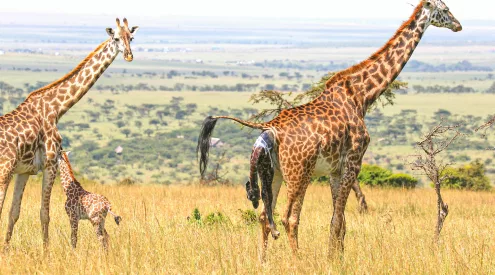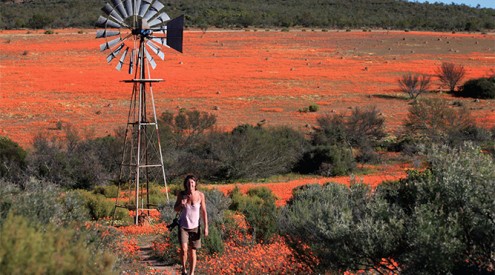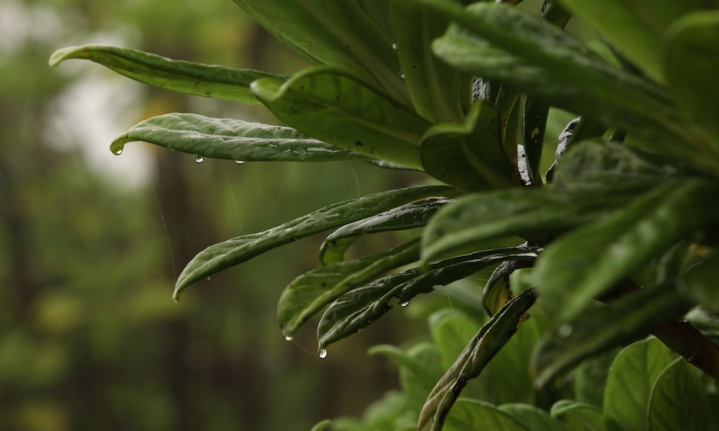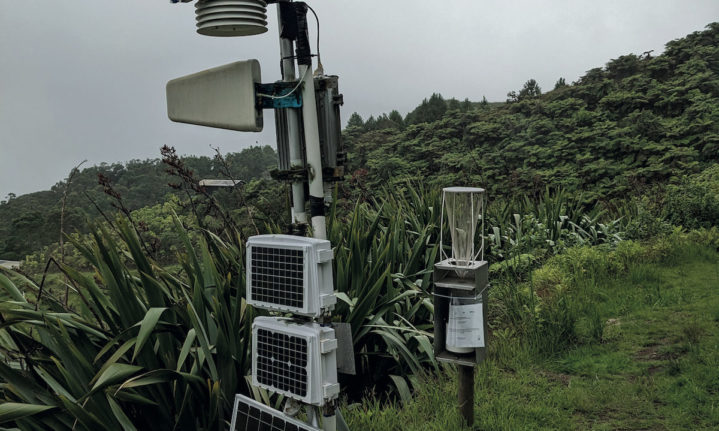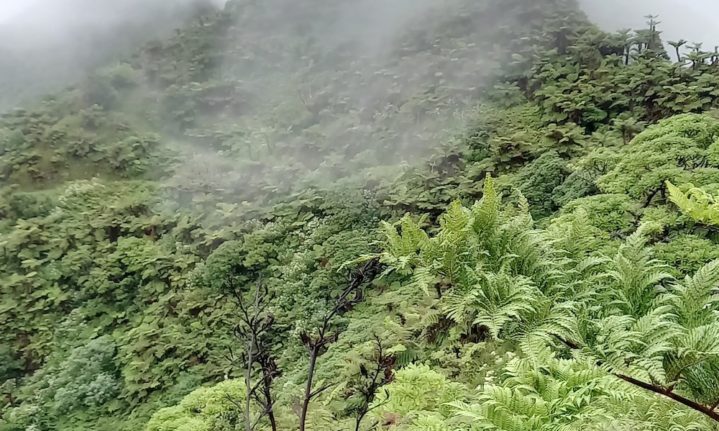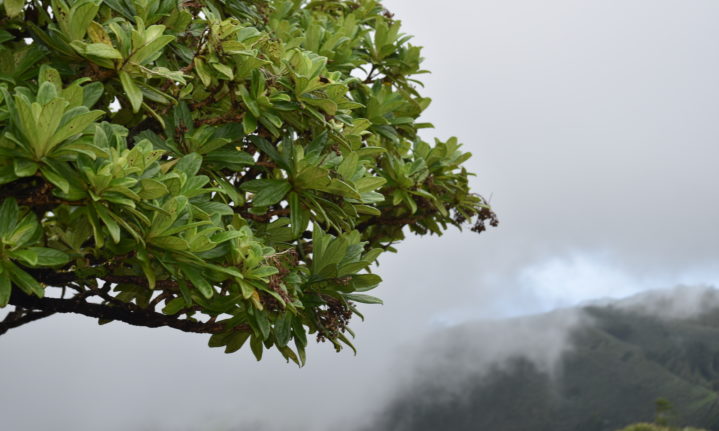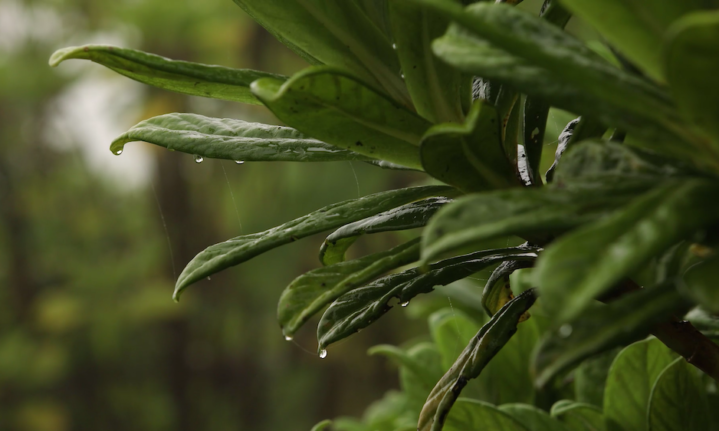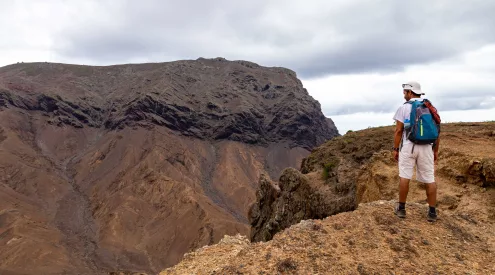Clinging to mist covered mountain tops on the UK Overseas Territory of St Helena are ancient fragments of the UK’s last natural cloud forest. Today, 250 unique species, existing nowhere else on the planet, can be found in just 16 hectares of globally significant cloud forest within the St Helena Peaks National Park, totalling one sixth of the endemic biodiversity for which the UK is responsible.

Mist interception in the cloud forest. Credit: St Helena Cloud Forest Project
Funded by the UK Government, the ‘St Helena Cloud Forest Project’ is on a mission to protect, conserve and expand this vitally important habitat, not just for the island’s people and wildlife, but for their long-term water security as well.
Working with local water utility company Connect Saint Helena, and core partners Arctium and the local Meteorological Station, the project uses a nature-based solution where conservation of the island’s natural resources will help to recover and enhance the island’s long-term water supply.
The predicted effects of climate change indicate a warmer, drier world which puts this already drought prone island’s water security at further risk. The endemic cloud forest habitat plays a critical role in capturing water from the clouds that cloak the steep slopes of the Peaks National Park. This is the island’s principal source of fresh water through mist and rainfall recharge, and just two of the catchments originating from the Peaks provide over 40% of fresh water used on the island. Cautious estimates being confirmed through ongoing research suggest an incredible 60% of this fresh water comes just from mist capture.

Cloud forest in the Peaks National Park. Credit: St Helena Cloud Forest Project
Endemic cloud forest species have evolved over millions of years to effectively intercept the mist, unlike invasive species which threaten this rare habitat. The cloud forest also helps the formation of peaty soils which act like a sponge, absorbing water and releasing it slowly instead of the rapid runoff associated with invasive habitat.
To improve water security, and help the island adapt to climate change, the project is building on previous data to improve understanding of the water cycle on St Helena. The island’s climate change and drought warning monitoring network includes several new weather stations and equipment to measure water levels and stream flow. Historical weather data is being used to model and assess the potential impact of climate change on the island.
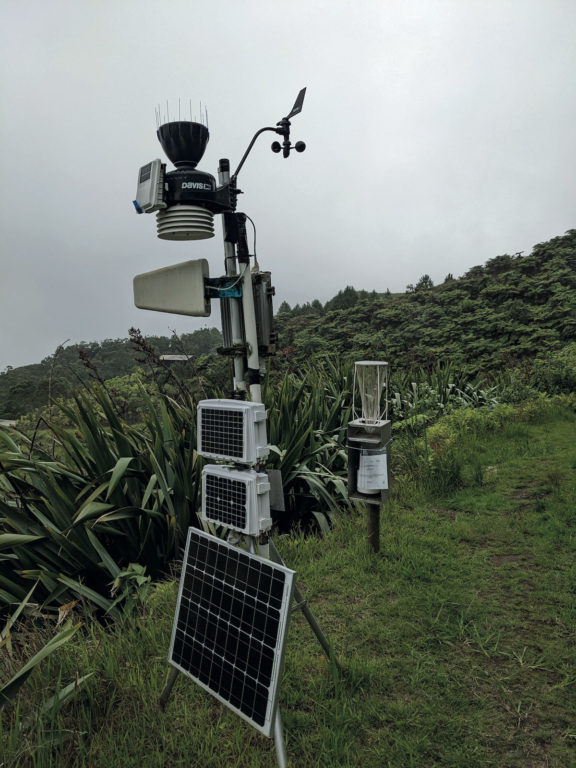
Automatic weather station, rain and mist gauge in the Peaks National Park. Credit: St Helena Cloud Forest Project
The Cloud Forest Project will continue to monitor weather conditions and water levels, both surface and groundwater, in the catchments fed by the Peaks National Park, to further understand the significance of the Peaks for the island’s water supply. This will help ecologists identify and target areas of cloud forest restoration to re-vegetate key areas for mist capture.
Increasing the area of cloud forest habitat is expected to enhance the island’s water supply and reduce the risk of that supply being depleted during times of drought. A nature-based solution for water, wildlife, and people.
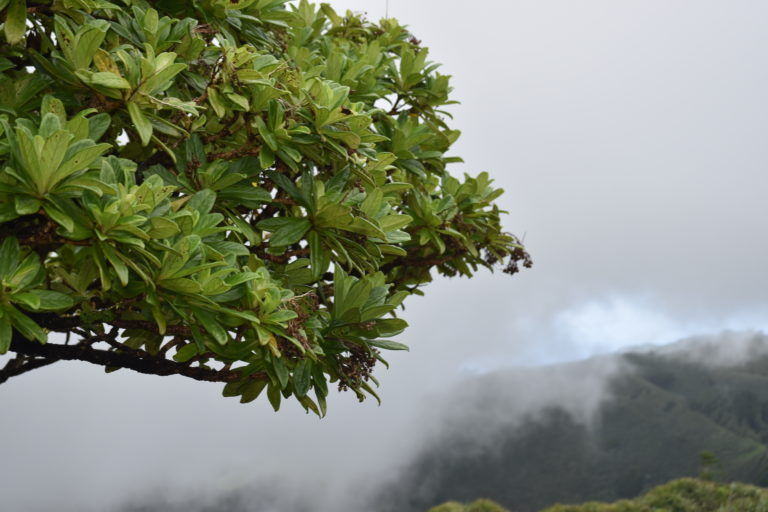
St Helena endemic Black Cabbage tree. Credit: St Helena Cloud Forest Project/ Kimberley Peters
More information:
For further information:
- www.sthelenatourism.com/st-helena-cloud-forest-project
- St Helena Peaks National Park | Facebook
- St Helena Peaks National Park | Twitter


